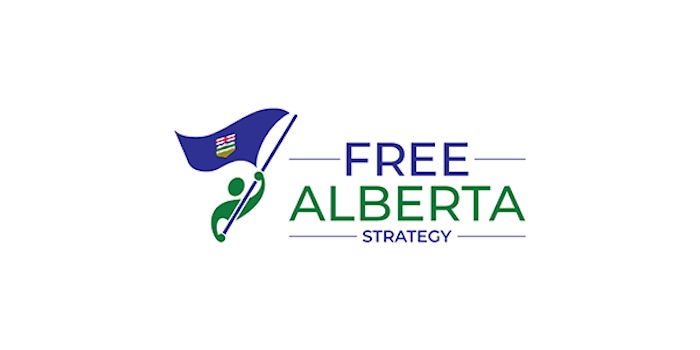Alberta
Group behind the Alberta Sovereignty Act pleased with Province’s strategy

Submitted by Free Alberta Strategy
The Alberta Sovereignty Within A United Canada Act – the new full name for the Sovereignty Act – was introduced to the Alberta Legislature on Tuesday.
Now that we’ve had a short while to digest it, we’re confident in saying that when it comes to protecting the interests of Alberta on the national stage, the Act is right on the money.
The Sovereignty Act, in practicality, is just a procedural bill – more or less just a framework for a free vote in the Legislature. It allows for a Cabinet Minister to introduce a motion about a “federal initiative” that the Minister believes to be unconstitutional on the basis of intruding into an area of provincial constitutional jurisdiction, or is otherwise harmful to Albertans, such as by violating Albertans’ rights and freedoms under the Charter of Rights and Freedoms.
The resolution would identify not only the “federal initiative” that is being addressed, but also specific “measures” that the government may use to push back.
The motion would then be debated on the floor of the Legislature, followed by a free vote of MLAs and – if the majority vote is in favour – the passage of the motion.
At this point, Cabinet is then tasked with implementing the specific “measures” identified in the motion.
The usual suspects have continued to claim that it’s unconstitutional for Alberta to insist that the federal government follow the constitution, and to refuse to help them enforce their laws when they don’t.
This was always a strange argument, but even more so now, given the bill explicitly says, right near the start:
Nothing in this Act is to be construed as (a) authorizing any order that would be contrary to the Constitution of Canada.
Some, however, have now finally come to understand the Strategy.
Take the National Post’s Carson Jerema, for example, who – just a few months ago – was attacking the Sovereignty Act.
Yesterday, he got behind it, in a piece entitled: “Surprise, Danielle Smith’s sovereignty act is very likely constitutional“…
This is hardly the Constitution-breaking plan, which Smith’s critics, myself included, warned about during her campaign for the UCP leadership. The characterization of the sovereignty act as a threat to the rule of law, which some critics are still expounding, is simply wrong. Jesse Hartery, a Toronto lawyer with expertise in federalism, says he has been frustrated by the debate around the sovereignty act because the proposal, as currently written “appears to be constitutional,” based on existing law.
“One government can seek assistance from the other, can co-operate with the other, but they can’t require the other to implement and enforce their laws,” he told me by phone Wednesday morning. “So the (Supreme) Court has never endorsed that, and in fact, there’s decisions where the court says: there’s no positive obligation on a province or the federal government to co-operate with the other.”
Of course, for those of you who’ve been following our work for a while, it’s not at all a surprise that the Sovereignty Act is constitutional!
It’s not a surprise to us, because this has been our argument for over a year – one that we’ve repeatedly explained in these emails, on social media, on traditional media, in virtual town halls, physical events, and more.
Provinces have always had the right to refuse to endorse federal laws, and to do so is not contrary to the Constitution of Canada.
The reality is that the attacks are nothing but political theatre from a group of politicians and critics that have been missing the mark on western alienation for years now.
We’ve seen how far the federal government is willing to go to impose their Laurentian views on the rest of the country. They’ve made a mockery of the political system over the past eight years, launching an all-out war on our energy industry that has landlocked our resources and destroyed our livelihoods. We all remember the dark days when unemployment was the highest in the country, debts were coming due, and suicide rates were high. None of us want to relive that.
The Sovereignty Act is absolutely necessary, and the fact that the Sovereignty Act is Bill 1 demonstrates that this new government has put standing up to federal overreach at the top of the priority list.
Its introduction has already caught the attention of the federal government, with Prime Minister Justin Trudeau saying that he isn’t “looking for a fight,” over the Sovereignty Act.
In his comments, there appears to be some awareness that bringing the hammer down on Alberta over this legislation would create potential issues in Quebec and Saskatchewan, with both provincial governments undoubtedly monitoring the situation in Edmonton closely.
The Alberta Sovereignty Within A United Canada Act has a purpose – to give Alberta a tool to protect against federal intrusions into provincial affairs. In passing this Bill, it appears that Premier Danielle Smith and her team hit all the right notes.
*****
If you want us to keep fighting for a strong and free Alberta, please make a contribution now to fund our efforts:
| CLICK HERE TO HELP |
If you’re not in a position to contribute right now, we understand, but please consider signing up as a volunteer to help spread the word.
Alberta
Alberta takes big step towards shorter wait times and higher quality health care

From the Fraser Institute
On Monday, the Smith government announced that beginning next year it will change the way it funds surgeries in Alberta. This is a big step towards unlocking the ability of Alberta’s health-care system to provide more, better and faster services for the same or possibly fewer dollars.
To understand the significance of this change, you must understand the consequences of the current (and outdated) approach.
Currently, the Alberta government pays a lump sum of money to hospitals each year. Consequently, hospitals perceive patients as a drain on their budgets. From the hospital’s perspective, there’s little financial incentive to serve more patients, operate more efficiently and provide superior quality services.
Consider what would happen if your local grocery store received a giant bag of money each year to feed people. The number of items would quickly decline to whatever was most convenient for the store to provide. (Have a favourite cereal? Too bad.) Store hours would become less convenient for customers, alongside a general decline in overall service. This type of grocery store, like an Alberta hospital, is actually financially better off (that is, it saves money) if you go elsewhere.
The Smith government plans to flip this entire system on its head, to the benefit of patients and taxpayers. Instead of handing out bags of money each year to providers, the new system—known as “activity-based funding”—will pay health-care providers for each patient they treat, based on the patient’s particular condition and important factors that may add complexity or cost to their care.
This turns patients from a drain on budgets into a source of additional revenue. The result, as has been demonstrated in other universal health-care systems worldwide, is more services delivered using existing health-care infrastructure, lower wait times, improved quality of care, improved access to medical technologies, and less waste.
In other words, Albertans will receive far better value from their health-care system, which is currently among the most expensive in the world. And relief can’t come soon enough—for example, last year in Alberta the median wait time for orthopedic surgeries including hip and knee replacements was 66.8 weeks.
The naysayers argue this approach will undermine the province’s universal system and hurt patients. But by allowing a spectrum of providers to compete for the delivery of quality care, Alberta will follow the lead of other more successful universal health-care systems in countries such as Australia, Germany, the Netherlands and Switzerland and create greater accountability for hospitals and other health-care providers. Taxpayers will get a much better picture of what they’re paying for and how much they pay.
Again, Alberta is not exploring an untested policy. Almost every other developed country with universal health care uses some form of “activity-based funding” for hospital and surgical care. And remember, we already spend more on health care than our counterparts in nearly all of these countries yet endure longer wait times and poorer access to services generally, in part because of how we pay for surgical care.
While the devil is always in the details, and while it’s still possible for the Alberta government to get this wrong, Monday’s announcement is a big step in the right direction. A funding model that puts patients first will get Albertans more of the high-quality health care they already pay for in a timelier fashion. And provide to other provinces an example of bold health-care reform.
Alberta
Alberta’s embrace of activity-based funding is great news for patients

 From the Montreal Economic Institute
From the Montreal Economic Institute
Alberta’s move to fund acute care services through activity-based funding follows best practices internationally, points out an MEI researcher following an announcement made by Premier Danielle Smith earlier today.
“For too long, the way hospitals were funded in Alberta incentivized treating fewer patients, contributing to our long wait times,” explains Krystle Wittevrongel, director of research at the MEI. “International experience has shown that, with the proper funding models in place, health systems become more efficient to the benefit of patients.”
Currently, Alberta’s hospitals are financed under a system called “global budgeting.” This involves allocating a pre-set amount of funding to pay for a specific number of services based on previous years’ budgets.
Under the government’s newly proposed funding system, hospitals receive a fixed payment for each treatment delivered.
An Economic Note published by the MEI last year showed that Quebec’s gradual adoption of activity-based funding led to higher productivity and lower costs in the province’s health system.
Notably, the province observed that the per-procedure cost of MRIs fell by four per cent as the number of procedures performed increased by 22 per cent.
In the radiology and oncology sector, it observed productivity increases of 26 per cent while procedure costs decreased by seven per cent.
“Being able to perform more surgeries, at lower costs, and within shorter timelines is exactly what Alberta’s patients need, and Premier Smith understands that,” continued Mrs. Wittevrongel. “Today’s announcement is a good first step, and we look forward to seeing a successful roll-out once appropriate funding levels per procedure are set.”
The governments expects to roll-out this new funding model for select procedures starting in 2026.
* * *
The MEI is an independent public policy think tank with offices in Montreal, Ottawa, and Calgary. Through its publications, media appearances, and advisory services to policymakers, the MEI stimulates public policy debate and reforms based on sound economics and entrepreneurship.
-

 John Stossel2 days ago
John Stossel2 days agoGovernment Gambling Hypocrisy: Bad Odds and No Competition
-

 Alberta2 days ago
Alberta2 days agoAlberta’s embrace of activity-based funding is great news for patients
-

 2025 Federal Election1 day ago
2025 Federal Election1 day agoCommunist China helped boost Mark Carney’s image on social media, election watchdog reports
-

 2025 Federal Election19 hours ago
2025 Federal Election19 hours agoRCMP memo warns of Chinese interference on Canadian university campuses to affect election
-

 2025 Federal Election1 day ago
2025 Federal Election1 day agoFifty Shades of Mark Carney
-

 Justice1 day ago
Justice1 day agoCanadian government sued for forcing women to share spaces with ‘transgender’ male prisoners
-

 Alberta1 day ago
Alberta1 day agoAlberta takes big step towards shorter wait times and higher quality health care
-

 2025 Federal Election10 hours ago
2025 Federal Election10 hours agoResearchers Link China’s Intelligence and Elite Influence Arms to B.C. Government, Liberal Party, and Trudeau-Appointed Senator










